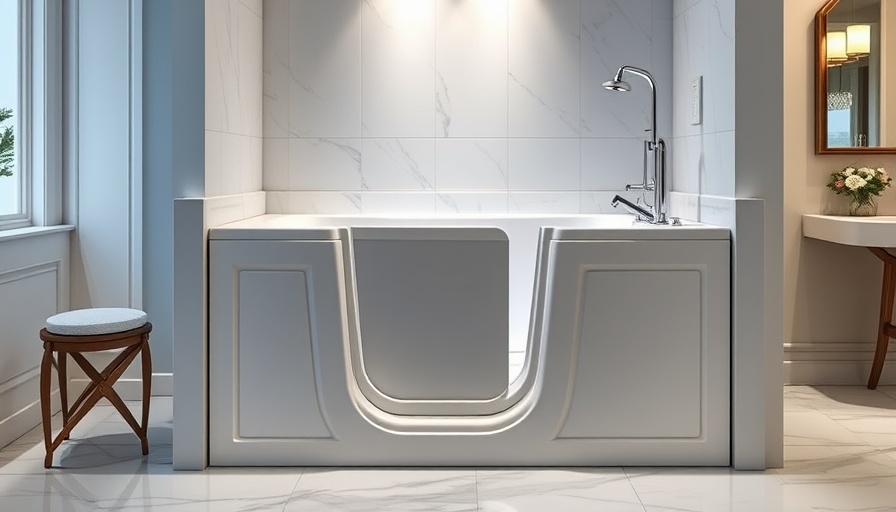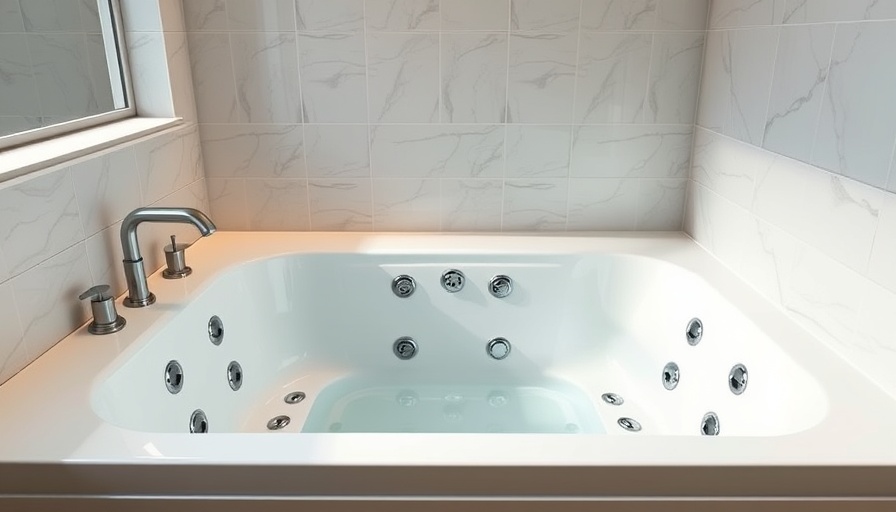
Ensuring Safety with Walk-In Tubs: A Vital Choice for Seniors
As we age or cope with mobility issues, the importance of home safety, particularly in bathrooms, cannot be overstated. Walk-in tubs provide a critical solution to facilitate safe bathing, reducing the risks associated with traditional bathing setups. With features designed specifically for accessibility and security, these tubs serve not just practical needs but offer peace of mind, making them a wise investment for seniors and their caregivers.
Understanding Walk-In Tubs and Their Importance
Walk-in tubs differ significantly from standard bathtubs. Their unique design incorporates a door that opens, allowing users to step directly into the tub, thereby eliminating the danger of climbing over high edges. For seniors prone to slips and falls, this accessible design is essential. In fact, according to the National Council on Aging, falls are the leading cause of injury among older adults in the U.S., emphasizing the need for preventative measures in the home.
Key Safety Features to Consider
When examining different models, a few key safety features should take precedence:
1. Non-Slip Surfaces: A Crucial Safety Feature
Non-slip surfaces are perhaps one of the most important considerations when selecting a walk-in tub. Textured surfaces within the tub help minimize the risk of slipping, particularly important in wet conditions. A study published by the Journal of Safety Research indicates that having non-slip designs can significantly reduce accidents by providing the necessary grip for users.
2. Accessible Design: Wider Doors and Low Thresholds
Accessibility features pack a potent punch in enhancing safety. Walk-in tubs with wider doors can accommodate wheelchairs and other mobility aids, ensuring that users can enter and exit safely. Low thresholds further minimize the height needed to step over, directly reducing fall hazards. For seniors or anyone with mobility difficulties, this thoughtfulness in design makes a substantial difference in daily living.
3. Grab Bars: Reinforcements for Stability
Integrated grab bars are another pivotal characteristic of a safe walk-in tub. The strategic placement of these bars provides users with something to hold onto when navigating in and out. This feature is essential as it empowers users to maintain balance and stability, effectively reducing the probability of falls.
4. Adjustable Seating: Comfort Meets Safety
Consider walk-in tubs that come with adjustable seating options. A seat at the correct height can prevent users from straining themselves when lowering or rising. In fact, ergonomic seating has been shown to increase independence for individuals who may require physical assistance.
5. Anti-Scald Technology: Protecting Against Burns
Burns are another risk associated with bathing, especially for seniors with diminished sensitivity to temperature changes. Features such as anti-scald technology allow for a regulated water temperature, ensuring that the water does not exceed a safe level. This feature, often included in modern designs, is an invaluable addition for enhancing safety and comfort.
Making Informed Decisions: Factors to Weigh
As you consider purchasing a walk-in tub, analyzing and inching through various product features is essential. Think about not only the safety attributes, but also the needs of the intended user. Take a step back to assess the bathroom layout to ensure sufficient space and navigate the surrounding area safely.
Rely on reputable brands that offer extensive warranties and customer service. Additionally, reviews and product comparisons can provide crucial insights into performance and reliability. Doing your homework can lead to enhanced quality of life and safety for those you love.
Conclusion: A Smart Investment for Long-term Safety
Investing in a walk-in tub is not just about luxury; it’s about equipping your home with features that prioritize safety. Given the rising rates of bathroom accidents among older adults, now is the time to take action. Evaluate your options and consider the safety features discussed to ensure a sound choice. Don't forget, a safe home is a happy home. Start exploring walk-in tubs today to enhance safety for yourself or your loved ones.
For more information about product comparisons and the best safety features in walk-in tubs, take the time to research resources that can guide you in making informed decisions. Your safety, and that of your family, should always come first.
 Add Row
Add Row  Add
Add 




Write A Comment